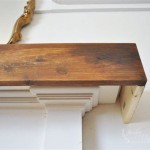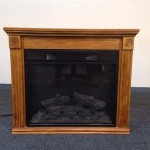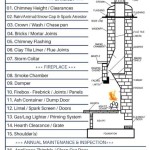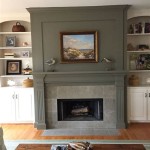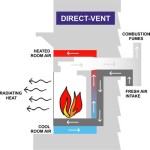How To Remove a Brick Fireplace Wall: A Comprehensive Guide
Removing a brick fireplace wall is a significant undertaking that requires careful planning, physical labor, and adherence to safety protocols. While not always a simple DIY project, understanding the process can empower homeowners to determine if they can manage the task themselves or require professional assistance. This article provides a comprehensive guide outlining the steps involved in safely and effectively removing a brick fireplace wall.
Before commencing any demolition, it is crucial to thoroughly assess the fireplace wall's construction and its relationship to the overall structure of the house. The type of brick, the presence of a chimney flue, and any load-bearing elements must be identified. Ignoring these factors can lead to structural damage or personal injury.
Assessing the Fireplace Structure and Identifying Potential Hazards
The initial step involves a detailed inspection of the fireplace wall. Examine the brickwork for any signs of structural distress, such as cracks or bulging. Document these observations with photographs, as this can be helpful for future reference and when consulting with professionals. Pay close attention to the bond pattern – the way the bricks are laid – as this can provide clues about the wall's construction. Common bond patterns include running bond, common bond, and English bond. Each pattern has a distinct appearance and can influence the wall's stability during demolition.
Determine if the fireplace wall is load-bearing. Load-bearing walls support the weight of the structure above. Removing such a wall without proper support can cause significant damage, including roof collapse or floor sagging. Look for signs of load transfer, such as ceiling joists running parallel to the wall or the presence of structural beams supported by the wall. If there is any doubt about the wall's load-bearing capacity, consult with a structural engineer.
Inspect the chimney flue. The flue is the vertical shaft inside the chimney that carries smoke and combustion gases away from the fireplace. Determine if the flue is integrated into the fireplace wall or if it is a separate structure. If the flue is integrated, demolition will require careful consideration to avoid damaging the flue. If the flue is a separate structure, it may require independent support during the wall removal process. Moreover, determine the material of the flue. Older flues may be made of clay tiles, which are fragile and can easily break during demolition. Newer flues are often made of metal, which is more durable.
Identify any utilities that may be running within the fireplace wall. Electrical wiring, plumbing pipes, or gas lines may be concealed within the brickwork. Carefully inspect the area for any signs of these utilities, such as outlets, switches, or pipes. If utilities are present, disconnect them before commencing demolition. Consult with qualified professionals, such as electricians or plumbers, to ensure safe disconnection and rerouting of these utilities.
Assess the fireplace's connection to the surrounding walls and floor. Determine if the fireplace wall is directly attached to adjacent walls or if there is a gap between them. This will influence the demolition strategy. Similarly, assess the connection between the fireplace wall and the floor. The fireplace may be built on a concrete slab or a wooden subfloor. The type of flooring will affect the removal process and the subsequent repairs.
Finally, before starting any work, obtain any necessary permits. Local building codes often require permits for demolition work, especially if it involves structural alterations or utility modifications. Contact the local building department to determine the permit requirements for the project.
Safety Precautions and Required Equipment
Safety is paramount when removing a brick fireplace wall. The demolition process generates considerable dust and debris, and there is a risk of falling bricks and other materials. Therefore, it is essential to wear appropriate personal protective equipment (PPE) and take precautions to minimize the risk of injury.
Essential PPE includes safety glasses, a dust mask or respirator, work gloves, and sturdy work boots. Safety glasses protect the eyes from flying debris. A dust mask or respirator prevents the inhalation of harmful dust particles. Work gloves protect the hands from cuts and abrasions. Work boots provide support and protection for the feet.
In addition to PPE, it is crucial to create a safe work environment. Clear the work area of any obstacles and ensure adequate ventilation. Cover nearby furniture and flooring with plastic sheeting to protect them from dust and debris. Set up warning signs to alert others to the demolition work.
The necessary equipment for removing a brick fireplace wall includes a sledgehammer, a brick chisel, a masonry hammer, a reciprocating saw, a pry bar, a wheelbarrow, and buckets. A sledgehammer is used to break apart the brickwork. A brick chisel and masonry hammer are used to remove individual bricks. A reciprocating saw can be used to cut through any reinforcing materials, such as metal ties or wire mesh. A pry bar is used to pry apart brick and mortar joints. A wheelbarrow and buckets are used to transport debris away from the work area.
Consider renting or purchasing a demolition hammer, also known as a jackhammer, for larger or more difficult demolition projects. A demolition hammer can significantly speed up the removal process, but it also requires extra caution due to its power and potential for injury. Familiarize oneself with the operation and safety procedures of a demolition hammer before using it.
A shop vacuum equipped with a HEPA filter is essential for controlling dust. Regular vacuums can exhaust fine dust particles back into the air, posing a health hazard. A HEPA filter traps these particles, ensuring cleaner air.
Finally, have a first-aid kit readily available in case of injury. Minor cuts and scrapes are common during demolition work. A well-stocked first-aid kit can help to treat these injuries quickly and prevent infection.
Step-by-Step Demolition Process
After assessing the fireplace structure, identifying potential hazards, and assembling the necessary equipment, the actual demolition process can begin. The demolition process should be approached methodically, starting from the top of the fireplace wall and working downwards.
Begin by removing any decorative elements, such as mantels, shelves, or trim. These elements are typically attached with screws or nails. Use a screwdriver or pry bar to remove them carefully, avoiding damage to the surrounding brickwork.
Next, remove the bricks one by one. Using a brick chisel and masonry hammer, carefully chip away at the mortar joints surrounding each brick. Start with the horizontal joints, known as bed joints, and then move to the vertical joints, known as head joints. Apply gentle pressure to avoid damaging the surrounding bricks. Once the mortar is sufficiently weakened, use a pry bar to loosen and remove the brick.
If the mortar is particularly hard or the bricks are tightly bonded, consider using a reciprocating saw with a masonry blade to cut through the mortar joints. This can significantly speed up the removal process, but it also generates more dust. Ensure that adequate dust control measures are in place.
As the bricks are removed, carefully stack them in a safe location. Bricks can be reused for other construction projects or recycled. Avoid stacking the bricks too high, as this can create a safety hazard. Alternatively, dispose of the bricks properly in accordance with local regulations.
Continue removing bricks, working downwards from the top of the fireplace wall. Periodically check the stability of the remaining structure. If the wall becomes unstable, provide temporary support using lumber or shoring. If a chimney flue is integrated into the wall, exercise extreme caution when removing the bricks around the flue. Avoid damaging the flue, as this can compromise its integrity and safety.
Once the entire fireplace wall has been removed, clean up the work area. Remove all debris, including loose bricks, mortar, and dust. Use a shop vacuum with a HEPA filter to remove any remaining dust. Inspect the surrounding walls and floor for any damage. Repair any damage as necessary.
After the demolition is complete, address the remaining structural elements. This might involve capping off gas lines, sealing electrical wiring, or repairing the subfloor. Consult with qualified professionals to ensure that these tasks are completed safely and in accordance with local codes.
Finally, consider the aesthetic aspects of the space. The removal of a brick fireplace wall often leaves a noticeable void. This space may require patching, painting, or other cosmetic treatments to blend seamlessly with the surrounding area. This is an opportunity to reimagine the space and create a new focal point that complements the overall design of the room.

Removing A Brick Fireplace

Simple Ways To Remove A Brick Fireplace With S Wikihow

Simple Ways To Remove A Brick Fireplace With S Wikihow

Removing Fireplace S Brick Facade Not So Hard

Fireplace Demolition Day The Handyman S Daughter

Latest Diy Project Fireplace Chimney Removal For A Nicer Living Room Jeff Geerling

Removing A Brick Fireplace
How To Remove My Too Big Hearth Help Com Forums Home

How To Strip Paint From Brick Fireplace My Alternate Life

How Do I Remove The Mantle Of A Fireplace Hometalk
Related Posts

